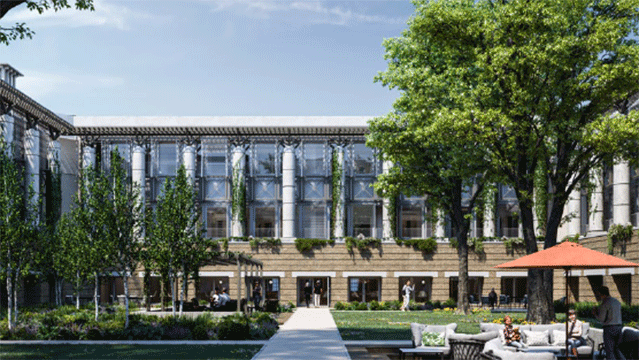Subterranean extensions continue to be attractive for homeowners, but more cases are hitting the courts, and London boroughs are updating their policies
Mega-basements for mansions and more modest residential basements are still in demand in London. The most expensive postcodes include luxury homes with basement wine cellars, swimming pools, gyms, cinema rooms, and even fall-out shelters. But digging down to create more floor space raises issues around the impact on neighbouring properties during construction, along with ensuring the structural stability of buildings.
The planning position
Last month, the government published a call for evidence on best practice for basement development. This follows the government’s commitment to consider how the planning regime handles basement development.
The emphasis of many inner London boroughs is now on seeking to control the number of mega-basements and smaller schemes, with an emphasis on mitigating the impacts on local residents. Neighbours are most concerned with disturbance during construction, and planning authorities are pandering to this.
There has been a domino effect in recent years: when one borough implements a tighter policy or procedure, others follow suit. The planning starting point is whether the basement requires planning permission or whether it is permitted development (PD) under the Town and Country Planning (General Permitted Development) (England) Order 2015 (“the 2015 Order”).
Permitted development?
Two cases brought by concerned neighbours have disputed a planning authority’s interpretation of the 2015 Order. In Royal Borough Of Kensington & Chelsea v Secretary Of State For Communities & Local Government [2015] EWHC 2458 (Admin), the High Court clarified the interpretation of paragraph A.1(f) of Part 1 of Schedule 2 of the 1995 Order, which explains an exemption where an enlargement would not be permitted development. The court interpreted the wording to mean that a basement in excess of one level was not permitted development; but within the tolerances allowed under the Class, a single level basement would be.
Then, in Eatherley v Camden London Borough Council [2016] EWHC 3108 (Admin); [2016] PLSCS 332, a resident successfully brought a challenge over his neighbour exercising PD rights for a basement extension, arguing PD does not cover substantial engineering works in basements.
The definition of “development” has always included engineering works, and General Permitted Development Orders have historically been interpreted to include basement development with no distinction between above and below development.
The court found that the council should have asked itself: “Were the engineering operations sufficiently serious to constitute a separate operation beyond the permitted creation of the basement space?” Where development involves engineering works in order to complete within the permitted development tolerances, a separate permission will be needed for the engineering works. If this is right, there will in practice be almost no basement that can be built as PD. This strange decision, if upheld, raises wider implications in respect of all PD rights, not just for basements: will householders now have to consider whether “separate engineering operations” are required to extend their homes?
Local policy
Kensington and Chelsea, Westminster and Camden have all now made Article 4 directions restricting PD rights. Any basements within these boroughs require planning permission and will be assessed against current planning policy.
Where a basement requires planning permission, careful examination of the relevant planning policies is required. Construction impacts are a significant consideration for the planning authority. There is nothing new in this; but a high profile is now given to these concerns, and residents campaigning against such development are well-informed and organised. Kensington and Chelsea, Westminster and Camden all have policies that restrict the size of basements to 50% of the site curtilage or garden area, and allow for excavation of only one level down. Each borough has similar requirements for the technical engineering information required when submitting an application, with details of the safe method of construction. Each requires adherence to codes of construction. It is normal to have to supply a detailed construction method statement and traffic management plan with conditions and/or section 106 obligations imposed.
Westminster’s much-published “Basement Nuisance Buster Squad” was launched in September to oversee basement construction within its borough, and it charges developers for doing so. At the same time, Westminster introduced a more stringent code of construction, replacing an earlier version. This may prove counter-productive: for example, the shorter working hours requirement will lengthen the period of disruption. Westminster has been charging developers via section 106 obligations for monitoring demolition and new-build developments, including basements. It will be interesting to see whether Westminster’s hefty monitoring charges attract a judicial review.
What next?
The government’s call for evidence will probably demonstrate that there are sufficient measures and checks in respect of mitigating basement developments. It has more pressing planning and housing issues to deal with. Planning authorities have sufficient controls to mitigate impacts and to ensure sustainable basement development within their areas. To seek to limit further may be seen as restricting a form of development contrary to the planning system’s aim to encourage and promote all forms of sustainable development – using brownfield land for basements reduces demand for greenfield sites.
The technical challenges to construction of a basement development probably still outweigh the hurdles of the planning process. The key for the success of a scheme will be to keep neighbours and the local authority informed about progress. Good basement development is possible with the right professional advising team and, crucially, a well organised contractor to manage sensitively the programme and construction process. The demand for basement development in central London is unlikely to diminish.
• Rachel Lee is an associate in the planning department at Irwin Mitchell












